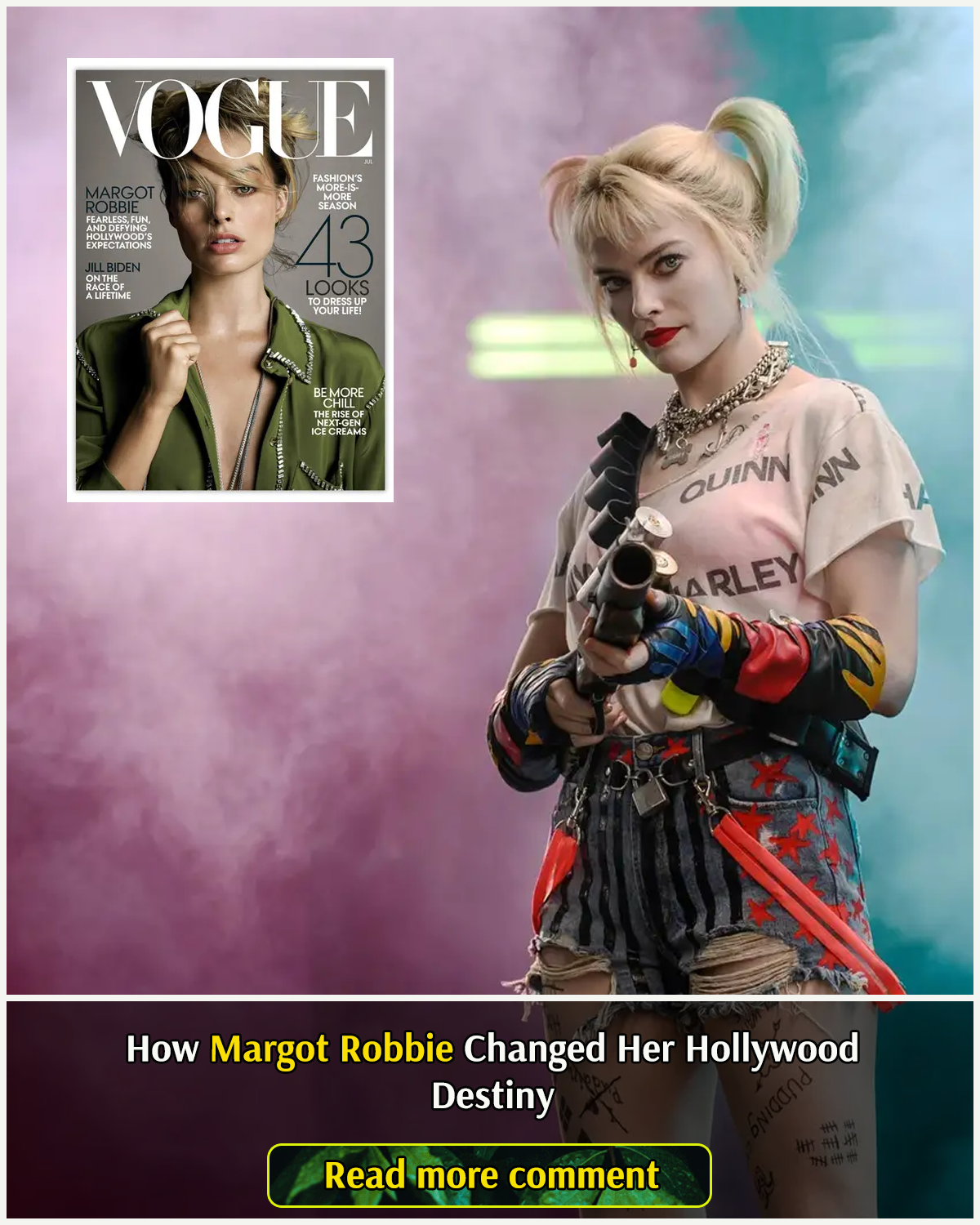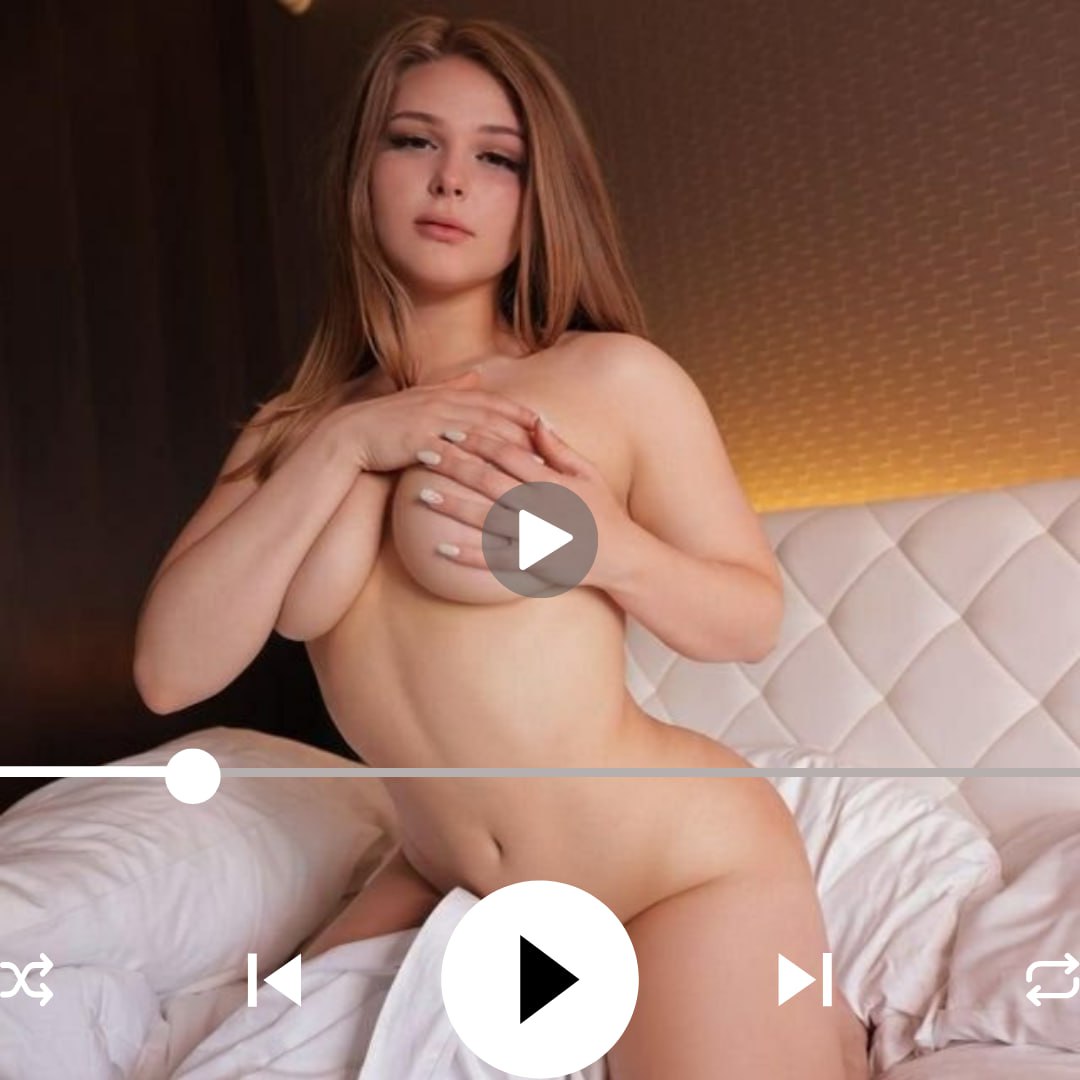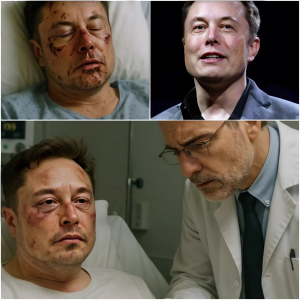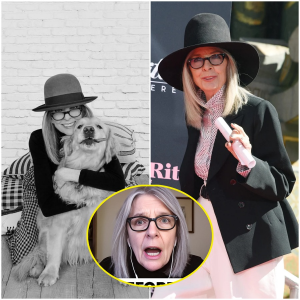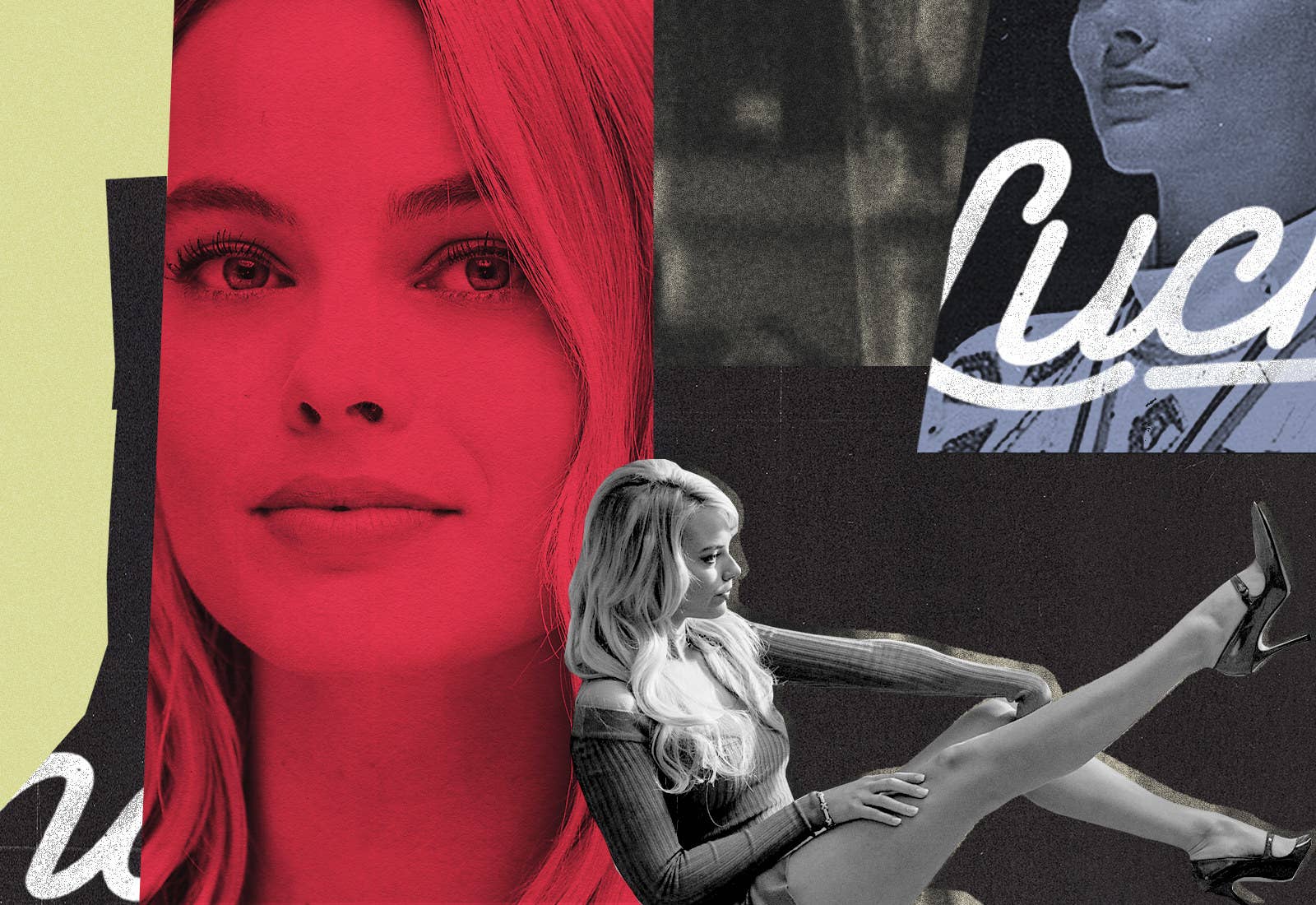
Ben Kothe / BuzzFeed News; Getty Images, Everett Collection
It’s a trope of celebrity profiles that the writer must declare, at some point, what the star in question represents — their role, their type, their place in the Hollywood system. That framing is now so expected that it’s become a secondary trope to reference the trope: “Because Robbie is new on the scene, reporters are trying to fix her with a narrative,” Rich Cohen wrote about Australian actor Margot Robbie in a 2016 cover story for Vanity Fair. “The job of the celebrity journalist: peg ’em so it’s not only as if you know ’em but always have known ’em or someone just like ’em. But Robbie is too fresh to be pegged. Less being than becoming.”
In addition to the general skeeviness of using the phrase “too fresh to be pegged,” Cohen — a profiler of the old school of celebrity journalism — then attempts to do exactly what he claims is impossible. “America is so far gone, we have to go to Australia to find a girl next door,” he writes. “She is 26 and beautiful, not in that otherworldly, catwalk way but in a minor knock-around key, a blue mood, a slow dance,” he continues. And then he quotes the famed producer Jerry Weintraub: “‘When I think of Margot Robbie, a single word comes to mind,” Weintraub told me. ‘Audrey Hepburn.’”
For decades, this sort of language — and the imposition of a (male) writer’s gaze onto the image of a burgeoning (woman) star — had been standard practice, particularly at glossy outlets like Vanity Fair. (See: Cohen fat-shaming Jessica Simpson in 2009, Chris Jones watching Penélope Cruz eat steak against the backdrop of a forced matador metaphor in Esquire in 2014, or Anthony Lane’s inexplicably lecherous descriptions of Scarlett Johansson’s pregnant body in the New Yorker that same year.)
Cohen’s framing of Robbie, like so many of these profiles, was also just, well, wrong. Even back in 2016, anyone who’d seen Robbie act could tell you that her type wasn’t Audrey Hepburn — or the Australian girl next door. Her image in Hollywood at that point was closer to her character in Martin Scorsese’s 2013 fraud romp The Wolf of Wall Street: a gold digger, a pinup adorned in nouveau riche trashiness. Far more Lana Turner, or even Marilyn Monroe, than Audrey Hepburn.
Like the profiles of Cruz and Johansson, the Robbie profile was greeted with general disgust. Even Robbie herself admitted it was off: “I remember thinking, That was a really odd interview, I don’t know how that’s going to come out,” she told an Australian news outlet. “And then when I read it, I was like, Yeah, the tone is really weird — like, I don’t really know what he’s trying to get at or play at.”
That sort of pushback, even from a powerful star, is far more rare than you might think. The Hollywood industrial complex is built on a symbiosis between stars and the publications that cover them: Each needs the other to survive. The power dynamic of that arrangement has shifted repeatedly over the last century, but the essence remains the same: The star offers themselves up (their look, their attitude, their stories about their personal life) as raw material, and the publication creates a story about who that person is, and why audiences should be attracted to them.
Since that Vanity Fair profile, Robbie has refigured the terms of her agreement with the media. She’s done it gradually, without flash or announcement: She didn’t announce she was giving up makeup, like Alicia Keys, or request to be “excluded from this narrative” like Taylor Swift, or even insist that she control every interview and all press coverage, like Beyoncé. She’s simply refocused the public’s attention away from her body, and the image prefabricated for her in her breakout role in Wolf of Wall Street, and toward her talent and her work, which is shaped by the three goals she and her production team discuss at regular check-ins every month: quality, variety, longevity.
On their surface, those words might sound as meaningless as “a minor knock-around key, a blue mood, a slow dance.” But they’ve allowed Robbie, now 29, to shape her stardom in a way that’s historically been reserved for men. Like several of her Hollywood contemporaries, she’s launched her own production company, LuckyChap, which has allowed her to dictate the tone of her own projects, from I, Tonya to Birds of Prey, the Harley Quinn–centric sequel to Suicide Squad out this week. More importantly, she’s developing dozens of movies and TV shows, almost all written and/or directed by women — gradually altering the landscape of Hollywood as a whole.
If you were basing your predictions for how Robbie’s career might turn out on Vanity Fair’s read of her in 2016, all of this might come as a surprise. Robbie has gone from the next interchangeable blonde ingenue to a truly formidable producer before turning 30. So how, exactly, did she do it?
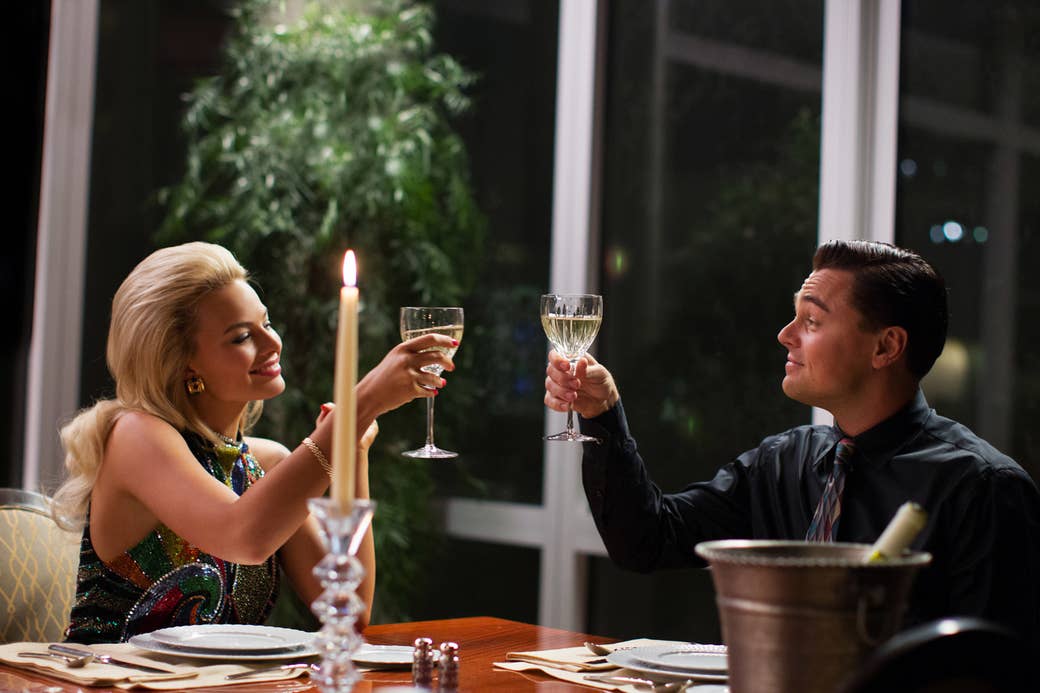
Paramount / Everett Collection Robbie and Leonardo DiCaprio in The Wolf of Wall Street (2013).
Robbie grew up on the Gold Coast of Australia, on the eastern edge of the country — a tidbit that, depending on your nationality, signifies very little or very much. The Gold Coast is a place that many Australians, including Robbie herself, often compare to Florida. “I had no idea I was living in a state that gets laughed at until I moved to Melbourne,” Robbie told Vogue in 2016. “And then someone was like, ‘Ohrrr, yar from Queensland, eh? You put ‘Eh?’ on the end of your sentences because you’re all a bit slow.”
Robbie also grew up with three siblings, raised by a single mom, a physiotherapist, and started working part-time jobs when she was a young teen, all of which contributed to a bunch of coded class framings in various profiles over the past decade: Net-a-Porter claimed she was “a natural grafter”; Vogue pointed out that her family had only one bathroom in a house of five, “the kind of setting that can scald one’s heart with ambition.” Her childhood “gave her a close-up look at the doors financial success can open,” the Hollywood Reporter asserted, “just as her own upbringing illustrated how a lack of means can keep them closed.” She tended bar at age 14, she cleaned houses, she worked at Subway. She was proud of her past (“I had the best upbringing”) but quickly grew frustrated with the way it framed her: as a quasi-feral “girl from the outback.”
When Robbie was 16, she was cast in a micro-indie that gave her a first taste of acting — something that she’d never, to that point, considered as a potential future. When she graduated from high school she moved to Melbourne, where she was cast on the nightly soap Neighbours, which, along with Home and Away, has served as a launching pad for almost every major Australian actor. The shows stay on the air as reliable, time-tested means to satisfy the requirements for Australian-produced television, function as counterprogramming to the nightly news, and signify somewhat differently than American soap operas: more like if The Young and the Restless met The O.C. and never got canceled.
The Australian film and television industry is small, so many young Australian actors who start on the soaps move to Hollywood to try and become the next Chris Hemsworth. Some of these actors end up toiling in interminable obscurity, but after Robbie spent a year refining her American accent and moved to Los Angeles, she was promptly cast in Pan Am (2011–2012), a Mad Men knockoff with flight attendants. The show was canceled before the end of its first season, but Robbie picked up a small role in the Rachel McAdams drama About Time (2013) and submitted an audition tape for a role described, in the script, as “the hottest blonde ever.”
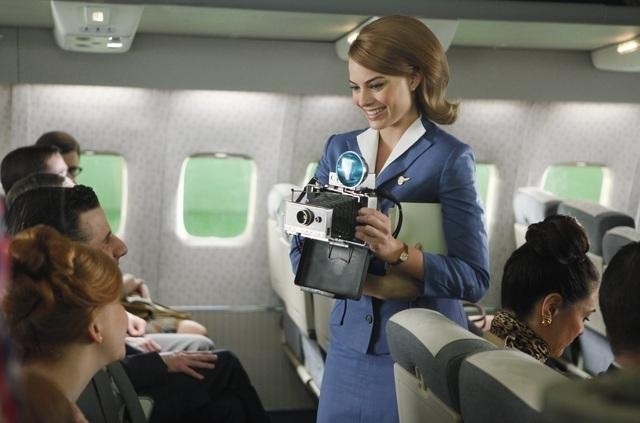
Patrick Harbron / ABC Robbie in Pan Am (2011).
That role was in The Wolf of Wall Street, starring Leonardo DiCaprio as a scummy titan of 1980s junk stocks. The “hottest blonde ever” was his trophy wife: trashy gorgeous, with a thick Brooklyn accent. According to W Magazine, “nearly every actress in her 20s tried out for the part,” but Scorsese has long had a thing for casting largely unknown women against very famous leading men. When Robbie flew to New York to audition in person, she showed up in jeans and boots. But as Robbie recalls, the casting director told her, “Go down the street and buy the tightest dress and highest heels you can find. That is Naomi.”
And that, at least to American audiences in the wake of Wolf, was also Robbie. She “permanently lodg[ed] herself in the collective male libido,” according to a 2016 Vogue profile, as “some new breed of high-maintenance super predator.” The role “defined her,” as Cohen put it in Vanity Fair, even though, at the time, she barely even earned a remark in the vast majority of reviews of the film. Robbie “isn’t bad,” Wesley Morris wrote in Grantland. “She’s committed to the chintz of the part. But it’s like watching someone aim for Lorraine Bracco in Goodfellas and Sharon Stone in Casino but land at Real Housewives.”
Most people saw the “real” Robbie as overlapping with her characters: a working-class kid who used her beauty to help her make it big.
It was only in hindsight that Robbie’s actual skill in her performance as Naomi became clear. “Her character could have been a walking cliché,” Lynn Hirshberg wrote in W Magazine in 2014, “but Robbie gave Naomi sharp edges beneath the smooth, lacquered exterior; she was not only fantastic-looking, but also canny and self-protective.” In 2016, Robbie’s Suicide Squad costar Jared Leto explained that she “took a role that other people would have had a very difficult time with and elevated it to something spectacular.” Writing in Vogue in 2016, Jonathan Van Meter admitted he had “subconsciously shorted her,” the same way that someone shorts a stock.
But to get that point of recognition, Robbie attempted to steer away from the “defining” performance she’d given. After Wolf, she was inundated with offers for Naomi-style roles.”I knew I needed to adjust people’s perception of me right then,” she later recalled, “because otherwise I was just going to be given [this one kind of thing].” She initially lost the lead role of a brunette “farm girl” in Z for Zachariah (2015), a postapocalyptic thriller, to Amanda Seyfried, but when Seyfried opted out, Robbie convinced the film’s financiers that she was far more like the farm girl than she was like Wolf’s promiscuous wife. The movie flopped in a very limited box office run, but by that point, Robbie had already been cast as Will Smith’s con artist sidekick/love interest in Focus (2015), a half-baked film that coasts, just barely, on its stars’ charisma.
Focus wasn’t a reprise of Robbie’s Wolf character so much as an alternate ending for her: Jess Barnett grew up in foster homes, has an accent, is a grifter, but is also unimaginably hot — again, in a slightly crude sort of way. In Wolf, her lack of sophistication was signified through the thickness of her accent, her general attraction to DiCaprio’s character, and her body, which was tanned and oiled in nude scenes to look like that of a Playboy Bunny. In Focus, Robbie gets to play slightly more refined for the second half of the film, but the audience knows that it’s an act, a con. And most people saw the “real” Robbie as overlapping with her characters: a working-class kid who used her beauty to help her make it big.

Warner Bros / Courtesy Everett Collection Left: Will Smith and Robbie in Focus (2015). Right: Samuel L. Jackson, Robbie, and Alexander Skarsgård in The Legend of Tarzan (2016).
Which helps explain the focus, in profiles and interviews, on Robbie’s own “natural grafter” backstory on the Gold Coast. For Australians, the combination of her upbringing and accent coded her as a somewhat classier variety of “bogan” — slang for what’s commonly known, in America, as “white trash.” She’s not Rebel Wilson, whose humor, petulance toward the press, and “unruly” body make her the quintessential “cashed-up,” aka new money, bogan. But she’s also not Cate Blanchett, whose affect is far more British than Australian, and who has used her movie fame to fund a theater company in Sydney. In interviews, Robbie is often invited to drink, or talk about drinking, or evoke Australian drinking; she gives herself and others “shit tattoos”; she hangs out with the “below-the-line” workers on sets (stunt people, prop masters, assistant directors). “Margot doesn’t flock to the other A-listers,” her childhood friend told the Hollywood Reporter in 2018, “because, to be honest, I don’t even think she sees herself in that.”
Robbie could class up, as she did, briefly, in Focus, and then again as a war correspondent in Whiskey Tango Foxtrot (2017), and as Jane, a proper 19th-century lady of the British manor, in The Legend of Tarzan (2016). But that character, too, was really just “blending in” as part of high society: Like her husband (uh, Tarzan), she had spent formative years in the Congo and was most at home in the jungle (which explains why she spends a solid percentage of the movie wet and covered in mud). Jane is also American, which in 19th-century Britain was just another way of saying “new money.”
In Suicide Squad (2016), the two strains of Robbie’s image — the hotness, the scrappiness — were twisted into the role of Harley Quinn. According to DC Comics canon, Quinn was a psychologist with a PhD who, upon meeting the Joker at a mental hospital, falls in love, experiences something of a mental break, and becomes his sidekick. It could’ve been a role similar to Michelle Pfeiffer’s turn as Catwoman, back in Batman Returns — but when the writers for Batman: The Animated Series first wrote the role of Quinn in the early ’90s, they wanted a specific actor, Arleen Sorkin, to play her, complete with a Bensonhurst (Brooklyn) accent. Quinn’s wardrobe in Suicide Squad (pigtails, crop tops, cheeky boy shorts) helped turn her into an object of fan adulation and, coupled with the accent, reaffirmed the understanding of just what kind of hotness Robbie was supposed to embody.
“I didn’t want to pick up another script where I was the wife or the girlfriend — just a catalyst for the male story line.”
At the time, Robbie admitted feeling ambivalent about the character: “When I first read it, I thought, I have nothing in common with her,” she told Vogue in 2016. “I hate her. It was a really tricky one to get my head around.” She explained to the New York Times that Harley gravitates to her wardrobe choices “because they’re sparkly and fun,” not because “she wanted guys to look at her ass,” but was that “as Margot, no, I don’t like wearing that.” Her performance was singled out and praised by critics, but the movie — like Focus, Whiskey Tango Foxtrot, and Tarzan, was a mess.
At this point, Robbie had been in Hollywood for five years and developed enough clout, and just enough money, to not just change the sort of roles she was taking, but start creating the sort of roles she wanted for herself. (This kind of clout, it should be noted, is much harder for nonwhite women actors to so easily acquire.) Back in 2014, she and her then-roommates (childhood friend Sophia Kerr and assistant directors Josey McNamara and Tom Ackerley, the latter of whom would later become her husband) founded LuckyChap Entertainment. As Robbie told Harper’s Bazaar, the reasoning was simple: “I didn’t want to pick up another script where I was the wife or the girlfriend — just a catalyst for the male story line.”
Producing was also a way for Robbie to excuse herself from the imperatives of patriarchal Hollywood — whose standards might have helped elevate her in the first place, but had quickly become claustrophobic. “This is a very smart thing for her to do,” Tina Fey, who has been producing her own work since leaving SNL, explained in 2016. “Because otherwise, as a piece of casting, she’s always going to have someone saying, ‘You look amazing — but we’d love for you to weigh less.’ Already at 25 she’s like, You know what? I’m going to opt out of that fuckery and be on the front foot with my career.”
The first step forward: a script based on the life of American figure skater Tonya Harding. When Robbie first read the script, she had no idea Harding was a real person: She was just young enough to have missed the Nancy Kerrigan knee-bashing, the ’94 Olympics, and the media shitshow that followed. But Robbie found herself compelled by a story that, through a mix of perspectives, flashbacks, and faux-documentary style, attempted to complicate Harding’s media narrative. Harding almost certainly had knowledge of a plot to harm her competitor — but was also a victim of physical and psychological abuse, and was the focal point of pernicious ideas about class and femininity. Instead of playing a supporting character, whose defining characteristics were “hotness” and implicit trashiness, she would be the main character in a film that interrogated both.

Frank Masi / Everett Collection Robbie as Tonya Harding in I, Tonya (2017).
The role required Robbie to “get ugly”: wear unflattering wigs, equally unflattering ’80s and ’90s clothing, and padding in her legs to approximate Harding’s more muscular build. And, at least at first, that was the primary discussion about the performance, highlighting the “courage” it took to make herself look like, well, not Margot Robbie. But the performance went so far beyond the physical transformation. “Robbie is able to acknowledge that Tonya’s hard-bitten nature is rooted in a place of hurt, which is apparent in every faltering smile and piercing grace,” Angelica Jade Bastién wrote in a wide-ranging appreciation in Vulture. “She moves like a wounded animal, operating best when she veers toward flashes of violence, verbal or otherwise.”
I, Tonya earned Robbie nominations for a Golden Globe and an Oscar — and Allison Janney, who plays Harding’s mother, won the Oscar for Best Supporting Actress. Time magazine declared Robbie one of 2017’s “Top 100 Most Influential People” and enlisted Scorsese to write the blurb about her. He compared her “all-bets-off feistiness” to Carole Lombard and “grounded, hardscrabble toughness” to Joan Crawford, but ultimately declared her to be “like no one else — that’s what Margot Robbie’s like.”
The film, and the conversation it started, was a pivot point in Robbie’s career and her ability to take control over her own roles. Since I, Tonya, LuckyChap has produced some clunkers: Terminal (2018), which went straight to VOD, and a Dust Bowl Bonnie and Clyde–esque gangster movie, Dreamland, is still awaiting distribution. But LuckyChap is also behind a wide slate of new and promising projects: Birds of Prey; the Kat Denning series Dollface, which airs on Hulu and was written and produced by Jordan Weiss; the rape revenge movie Promising Young Woman, starring Carey Mulligan and directed by Emerald Fennell; a Greta Gerwig take on Barbie (set to star Robbie); an adaptation of Ottessa Moshfegh’s My Year of Rest and Relaxation; and a Netflix adaptation of Stephanie Land’s Maid; plus several other projects in early stages of development. Robbie has also partnered with screenwriter Christina Hodson to create the Lucky Exports Pitch Program, in which six women screenwriters, four of them women of color, developed pitches that are now being produced by Hodson and LuckyChap.
From the beginning, LuckyChap had produced scripts with powerful women at their center. But after the revelations of #MeToo, Robbie and her team made a concerted effort to put women in power behind the camera as well. Birds of Prey was written by a woman (Hodson) and directed by a woman (Cathy Yan); its four central characters are women who, instead of being positioned in opposition to each other, are just…friends? And the Joker is nowhere in sight. You can see the shift in control down to the way Quinn is costumed: the hot pants are gone, replaced by a blazer, a sports bra, and orange track shorts. “That’s what happens when you have a female producer, director, and writer,” Birds of Prey costumer designer Erin Benach told Vogue in 2019. “Yeah, it’s definitely less male gaze-y,” Robbie added.
The contrast is further accentuated when you look at the non-LuckyChap productions Robbie has appeared in since I, Tonya: There’s Mary Queen of Scots, a story of two historical women monarchs that somehow manages to feel disempowering and dull, and Once Upon a Time in Hollywood, in which Robbie plays a bubbly, near-silent Sharon Tate amid a classically masculinist Tarantino script. She has been nominated for Best Supporting Actress for her role in Bombshell, the ideologically confused take on the sexual harassment scandals at Fox News. Her performance is impressive, but one has to wonder whether a different film would’ve emerged if the movie — about women’s reactions to their own objectification, on and off the screen — had been written and directed by a woman, instead of just produced by one (in the form of Charlize Theron’s production company).
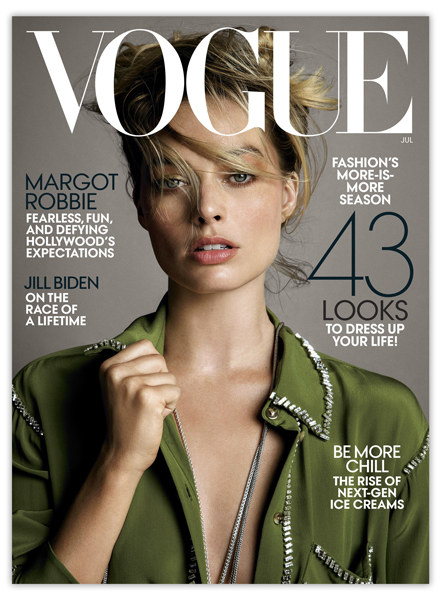
Vogue Robbie on the July 2019 cover of Vogue.
With this shift in production, something remarkable happened off set: Press coverage of Robbie began to focus almost entirely on her role as a producer. A 2019 Vogue profile, ahead of the release of Once Upon a Time in Hollywood, glosses over the usual bases of the celebrity profile (her love life, her plans for children, her beauty routine, her relationship with social media) in favor of her knack for producing. The “73 Questions” video that accompanies the profile takes place not at her home, but at the farmhouse-style cottage that houses LuckyChap. In 2018, Variety listed Robbie as one of its 10 “producers to watch”; the magazine’s January 2020 cover story declares it “Her Moment” and labels her an “actor-producer.” She has an Instagram, but it’s deeply, almost hilariously, uninteresting. When Robbie married Tom Ackerley, the only photo she released was a close-up of herself flipping off the camera. Her personal life, she suggests, is beside the point.
The work is the point. “Fame is such a weird thing,” she admitted to Charlize Theron in January. “It has a way of coming on very quickly. And I felt untethered by it. I was searching for different ways of taking control of my life, to get where I wanted to be. As a producer, you get to be part of everything. And not just on set, but in the years it takes up to that point. I like exercising that business savvy part of my brain — even doing the tax incentive shit.” The stories about her that end up in profiles aren’t about some cute thing she does with her friends, but about working for 13 hours with the writer of Birds of Prey on story cards. “She is remarkable in that sense,” Hodson told Variety. “I certainly don’t know of any other actors like her who would do that.”
Even the way Robbie has been photographed recently mirrors the change. Back in 2016, she was wearing bathing suits on the covers of Vogue and Vanity Fair to promote Tarzan. In the past two years, her Vogue and Variety covers were headshots; on the cover of W, she, Theron, and Nicole Kidman wear business suits. Of course, there’s truly nothing wrong with wearing a bathing suit on the cover of a magazine, but the shift underlines the fact that not just Robbie is thinking of herself differently, but the press — and, by extension, the audience — is as well. “I want people to see me as an actor,” she told Net-a-Porter in 2018. “I am not a model.”

Warner Bros / Everett Collection Robbie as Harley Quinn in Birds of Prey (2020).
The star-centered production company isn’t anything new: Back in 1919, silent actor Mary Pickford, along with then-husband Douglas Fairbanks, Charlie Chaplin, and director D.W. Griffith, founded United Artists as a way of wresting control (and profits) from the studios that had been exploiting their stardom for years. In the 1950s, classic Hollywood stars, newly liberated from their studio contracts, tried to figure out a way to lower their income tax.
Then, as now, “self-incorporation” was also a way to attempt to leverage some control (and increased profit percentage) over a project, but that sort of control was rarely available to women. The ’50s-era production companies were also almost entirely limited to projects featuring the star, and rarely included any actual production duties. Lucille Ball and Mary Tyler Moore both produced their own shows (and, in the case of Moore, many others) but remained relegated to what was then the entertainment backwater of television. In the 1990s and early 2000s, already-powerful stars became even more powerful via production companies founded with a producing partner (Tom Cruise and Paula Wagner), a director/collaborator (George Clooney and Steven Soderbergh), or a spouse (Brad Pitt and Jennifer Aniston).
It was a way to make (more) money, but also to implement what was often described as a “one for them, one for us” philosophy: the commercial, blockbuster films would help fund the weirder, more personal, less commercial projects. For Clooney and Soderbergh’s Section Eight, that philosophy eventually exhausted itself. But for Brad Pitt’s Plan B — which he took over after his split from Aniston — it’s become a way to produce films, often by underrepresented filmmakers, that might not otherwise get mainstream funding, attention, or distribution. Most famously, Plan B produced 12 Years a Slave, but it was also behind Selma, Moonlight, Okja, and If Beale Street Could Talk.
Until recently, however, the role of running a sprawling, experimental, powerful production company, like the field of directing itself, has been largely reserved for white male stars. After the runaway success of The Seven Year Itch, Marilyn Monroe — fed up with crappy, typecast parts — “self-incorporated” as Marilyn Monroe Productions. She negotiated a new contract with Fox, with the stipulation that she become a producer on future films, and the ability to reject scripts and directors. But she ended up making just two films (Bus Stop and The Prince and the Showgirl) before her death in 1962.
“I like exercising that business savvy part of my brain — even doing the tax incentive shit.”
Some ’90s and 2000s stars — including Sandra Bullock, Julia Roberts, and Drew Barrymore — have production companies, but their scope has been largely limited almost entirely to films in which they, themselves, have starred. More recently, Reese Witherspoon, Charlize Theron, Kerry Washington, and Viola Davis have expanded their film production footprints to include web series, first-look deals with studios and networks, and Amazon, Hulu, and Netflix series — some with them in starring roles, but many without. Robbie is significantly younger than any of those stars, but their goals are of a piece: They’re not just helping produce their vanity projects — they’re reimagining what Hollywood production could look like.
Last year, Robbie’s Bombshell costar Nicole Kidman was asked about the differences between her and Robbie. They’re both Australian; both with images coded — in slightly different ways — as bogan; both increasingly regarded as brilliant actors. But the first third of Kidman’s career was deeply shadowed by her relationship with Tom Cruise, and the conversation about her has never not included her personal life. As I wrote in 2017, amid her tour de force performance in Big Little Lies, she’s been labeled a “revelation” with such frequency that one has to ask what is making people forget, year after year, how consistently good she’s been for decades.
At 52, Kidman has had to negotiate so much tabloid coverage, and so many ill-conceived parts, for audiences to finally admit to her greatness. Robbie started LuckyChap at 24, and produced a film that earned her an Academy Award nomination at 26. Her slate is filled with projects — for herself and others — that are different, and challenging, and bringing other people into positions of power from which women like her and Kidman have usually been excluded. “I didn’t have the opportunity to produce my own things or control my destiny like that,” Kidman explained. “So that is definitely different.”
Being hot doesn’t make you interesting. Neither, necessarily, does acting skill. “Quality, variety, and longevity” might make someone a Hollywood legend, but there are dozens of those. What Robbie and the other women star/producers like her are doing is more profound than that. Back in 2014, Robbie posed for renowned art photographer Bill Viola. “Margot looks like a Siren out of Greek mythology,” he told W Magazine. “I see her as an alluring goddess who might delight or destroy.”
It was a typical comment about Robbie, and her image, at least at the time — in line with the label of “sexual napalm” she earned that same year from the Los Angeles Times, and Jonathan Van Meter’s concern, in Vogue, that she might be a “high maintenance superpredator.” Those descriptions evince the same fear: that men will be beguiled by beauty, and then destroyed by it. Robbie, and the other women star-producers changing the landscape of Hollywood, aren’t going to destroy men. But they might destroy, or at least radically remake, the system. And that, to women working in Hollywood, and in audiences all over, promises something like real, actual delight. ●
